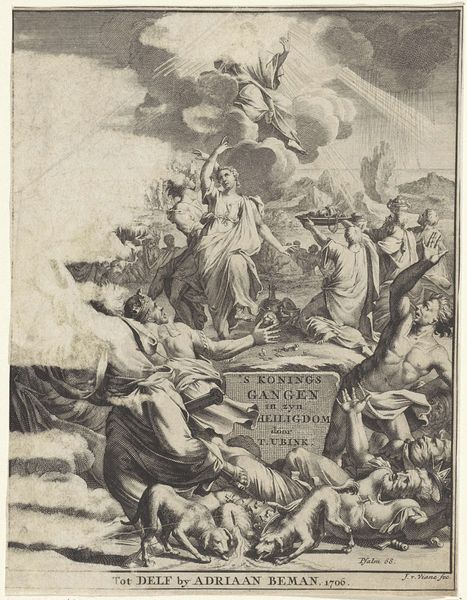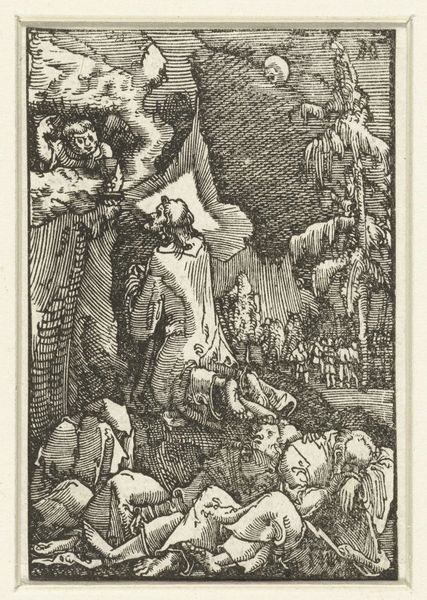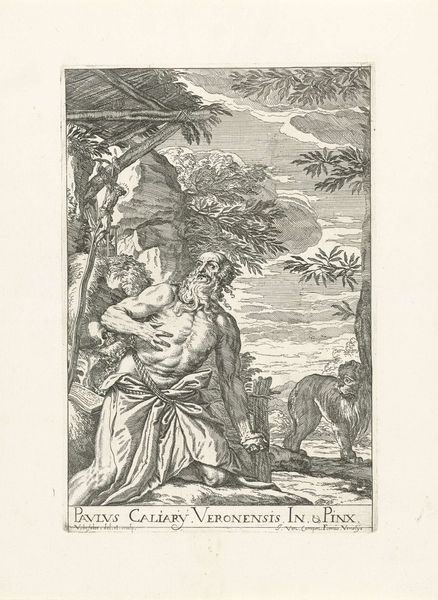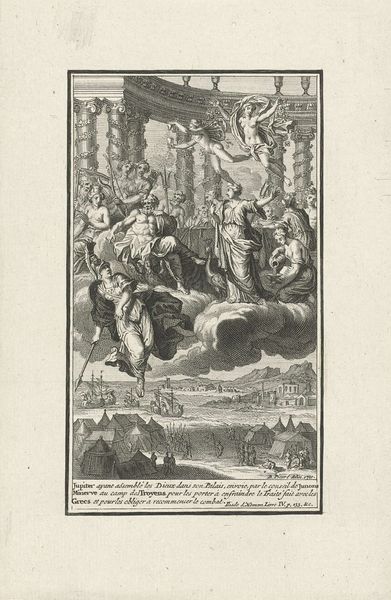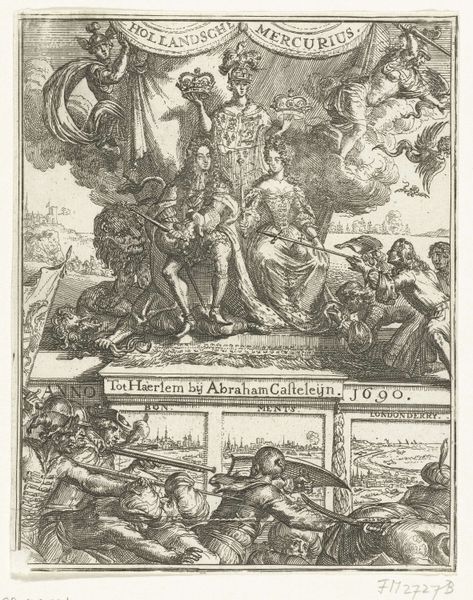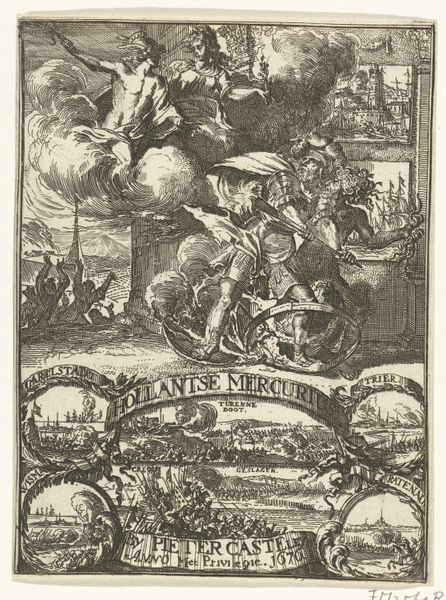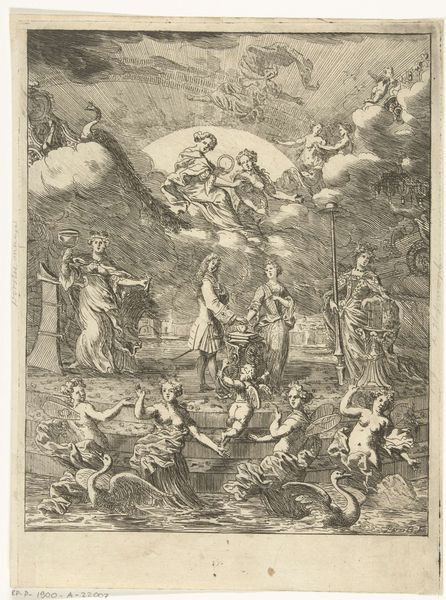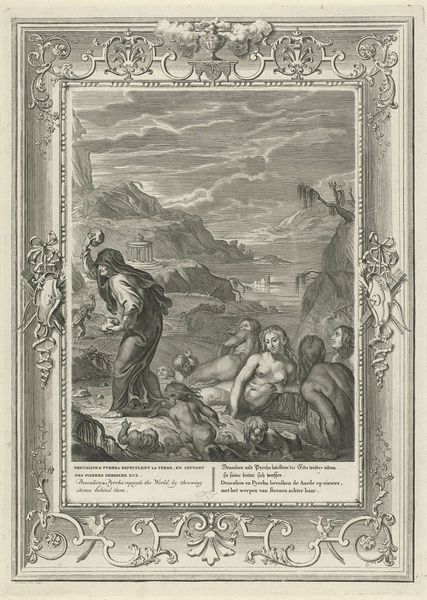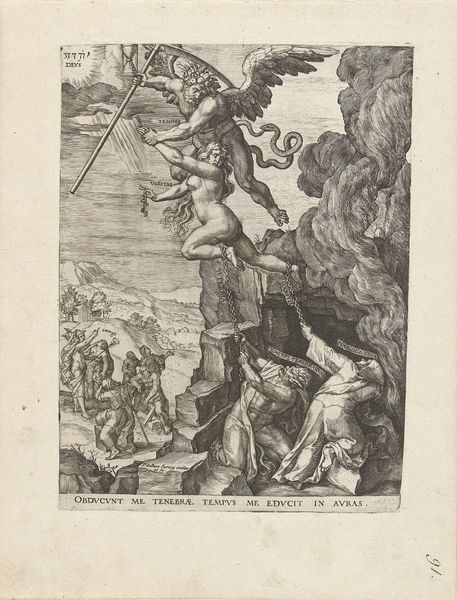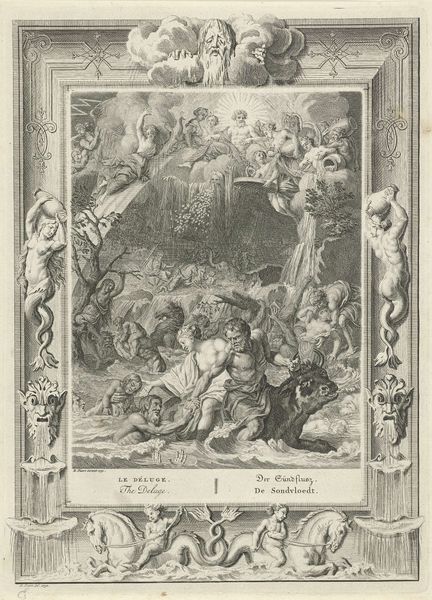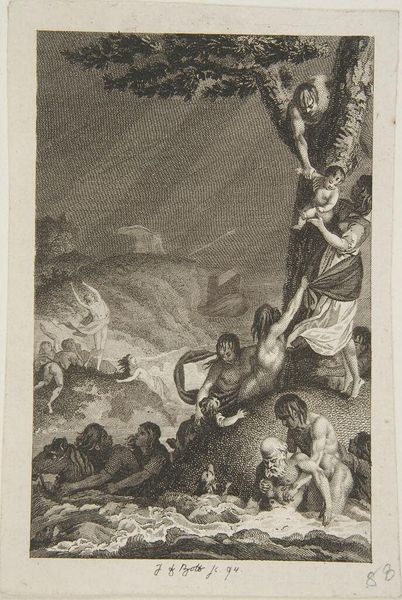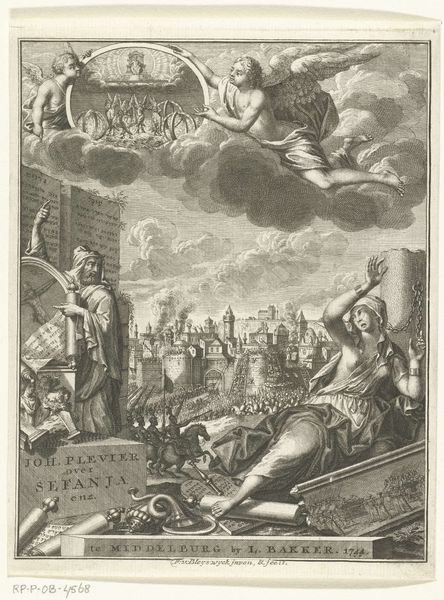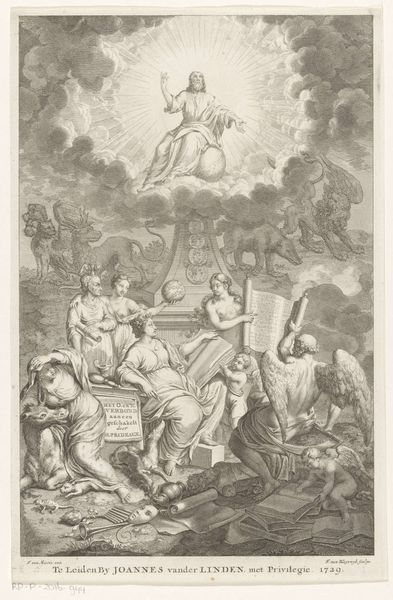
Titelprent voor het derde deel van de Spaanstalige versie van Guerres de Flandresversie van Guerres de Flandres 1670 - 1699
0:00
0:00
romeyndehooghe
Rijksmuseum
print, engraving
#
baroque
#
pen drawing
# print
#
figuration
#
line
#
history-painting
#
engraving
Dimensions: height 257 mm, width 157 mm
Copyright: Rijks Museum: Open Domain
Curator: This print, currently residing here at the Rijksmuseum, is the "Titelprent voor het derde deel van de Spaanstalige versie van Guerres de Flandres" by Romeyn de Hooghe, likely created between 1670 and 1699. Editor: My initial impression is that the composition feels incredibly dense, almost overloaded with allegorical figures. The linear quality of the engraving definitely emphasizes the Baroque theatricality, but it also flattens the depth. Curator: Indeed. De Hooghe was deeply embedded within the political landscape of the Dutch Republic. He designed this as a title print, functioning almost like propaganda to frame the Spanish perspective of the Wars of Flanders. The imagery intended to legitimize the Spanish presence in that region. Editor: The stark contrast in tonality certainly helps guide the eye. Notice how the figures at the top are bathed in this bright light, while the base, particularly the vanquished figures, seem to sink into shadow and chaos. There’s a very deliberate hierarchy created. Curator: Precisely. The heroic portrayal of Alexander Farnese, even in his portrait, is contrasted against those chaotic figures at the base which are symbolic of the conflict’s impact on ordinary people. Consider, too, the inclusion of historical and mythological figures – their placement underscores the alleged righteousness of the Spanish cause through appeals to higher powers and classical allusions. Editor: I'm also struck by the textures. The engraving creates a tangible sense of fur, fabric, and even cloud. Look closely and the faces emerge out of those lines and shades to produce complex figures from essentially abstract marks. Curator: It’s a potent demonstration of how art became enmeshed in 17th-century power struggles, serving as a vehicle for nationalistic rhetoric and ideological messaging. De Hooghe skillfully employed established visual tropes to sway public opinion in the face of conflict. Editor: Seeing how these symbolic components are pieced together offers so much into how perceptions and propaganda were literally constructed back then. Thank you, that’s very insightful. Curator: It highlights how much art acts as both a reflector and shaper of socio-political realities, something especially evident within politically charged artwork of the time.
Comments
No comments
Be the first to comment and join the conversation on the ultimate creative platform.
